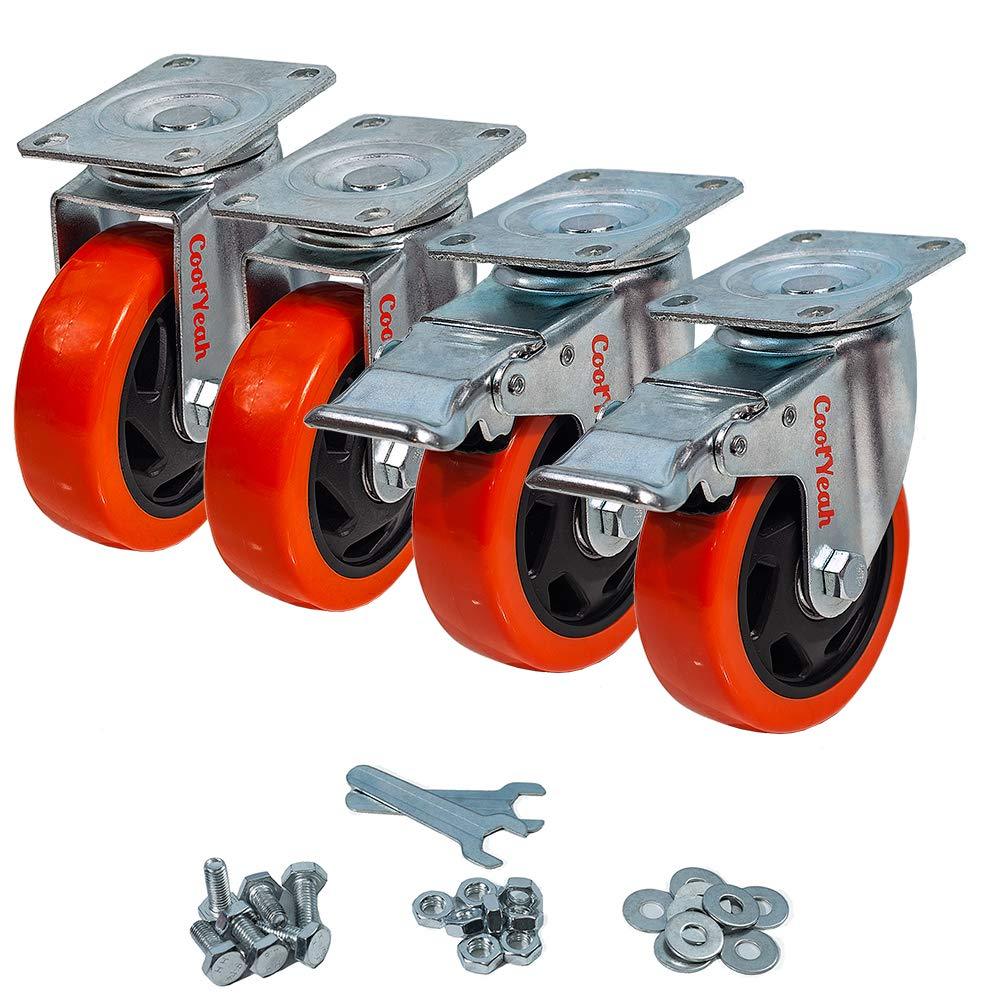What Caster Wheel do you Need?
In this article we are going to look at some of the considerations that you need to make when choosing the right castor.

Firstly you need to measure the wheel diameter, and remember the larger the wheel, the easier it is to move.
Next choose the type of castor. Top plate, bolt hole or threaded stem. To decide this think about how you want to fix your castor to your unit and how much each castor is expected to carry.
Next you need your fixing dimensions. Measure your top plate dimensions in order to match any replacement castors. Alternatively measure your bolt dimensions or your threaded stem size. Also measure your fixing bolt size D1 shown in the graphic on screen. In order to measure thread size simply measure the diameter of the thread. 8mm diameter equates to a m8 thread. Top plate castors are fixed to your unit by four fixing bolts per castor.
Supplied separately:Bolt hold castors can attach either by using a threaded bolt or a tubular adapter. Threaded stem castors are supplied with a stem that can screw into your equipment. Heard the one about square pegs into round holes? Attaching castors into round and square tubes can be achieved by using bolt hole castors and castor tube adapters. We have a variety of sizes available in both square and round tubular expander fittings. To find out more just speak to a member of our team.
Next you need to choose the right wheel material. As a general rule of thumb, its hard wheels for soft floor surfaces, and soft wheels for hard floor surfaces. Soft wheels are rubber and hard wheels are nylon and polyurethane. Pneumatic and puncture proof wheels also available from Ross Handling are ideal for outdoor applications.

Then you need to decide the castor configuration: Swivel,swivel with brake, or fixed. Please be aware that bolt hole castors are available in swivel and swivel with brake configurations only. There are numerous configurations available but here are three of the most common to help you decide the right configuration for you. Four swivel castors for the maximum maneuverability but may be difficult to control on a straight run and not ideal for heavy loads. Two swivel castors and two fixed castors, the most popular configuration as it provides the best control coupled with maneuverability. Two swivel castors with brakes and two fixed castors. Again the most popular option as it gives good control and maneuverability and allows the items to be locked into a specific location as required. To safety and performance the next step is vital.
Checking the load capacities:To do that just follow a simple equation. The maximum load that each castor needs to carry equals the unit weight plus maximum extra load then divide it by three. Dividing the total by three gives you an extra margin for safety allowing you to know the maximum weight each castor can carry in a safe working environment and allowing for uneven floor surfaces. You are almost ready to choose the right castor for you. But before you make your final decision there are just a few other considerations which you might want to make.
Swivel radius:This is the distance from the centre of the castor head fitting to the outside of the wheel. This measurement enables you to ensure you have enough clearance for the complete castor to rotate without being fouled. It is important to take this into consideration when deciding where to attach the castor. Also note that braked castors have slightly larger swivel radius's as a result of the foot brake mechanism. Floor surfaces. All our stated load ratings for our castor ranges are based upon the assumption that the floor surface is reasonably level. Any obstructions, ridges or dirt will effect the load rating and the efficiency of the castors. To talk more about this point, just get in touch and one of our expert team will be very happy to advise. Health and safety.:All our castors are designed for low speed applications and power towing castors are available upon request. It is important to choose the right castor for the job to avoid against any manual handling injuries. Bearings. Choosing castors and wheels with bearings makes them easier to move. However in certain outdoor and offshore environments, standard bearings may start to seize. You might want to consider the stainless steel bearings in this instance and we have a wide range available.
Temperature:If you are working in extreme temperatures you might need to consider a specialist solution. We offer a wide range of temperature resistant castors which can withstand high temperatures in environments such as , ovens kilns and foundries. These castors can also withstand low temperatures such as in freezers and outdoor environments. And there we have it some top tips on choosing the right castor for you.

